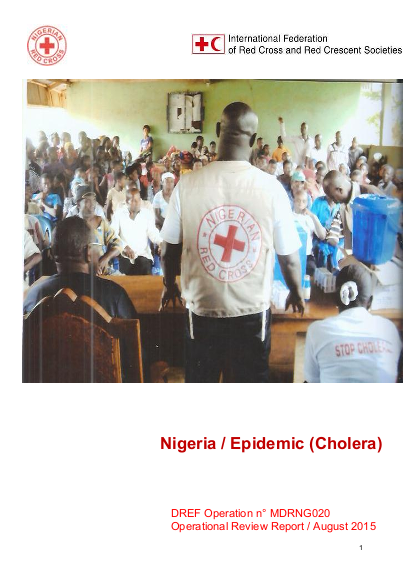
In 2015, 13 of the 36 States in Nigeria reported cholera cases, with Anambra, Kano, Rivers and latterly Ebonyi States being the worst affected. By the end of April 2015, 2,108 cases, with 98 deaths had been reported, and though it compared positively with previous years, the CFR had risen to as high as 12% in some areas. Following the outbreak, the International Federation of Red Cross and Red Crescent Societies (IFRC) released CHF 175,228 from the Disaster Relief Emergency Fund (DREF) to support the Nigerian Red Cross Society (NRCS) respond to the needs of the 15,000 people (3,000 households (HHs) in Anambra, Kano and Rivers States for a period of three months. Kano was later replaced by Ebonyi State. As part of the IFRC’s efforts to improve its operations and the level of accountability to all stakeholders, it was recommended that a review was carried out of the MDRNG020 Nigeria Epidemic (Cholera) to assess its 1) Relevance and appropriateness, 2) Efficiency, 3) Effectiveness, 4) Coverage, 5) Coherence, and 6) Sustainability and connectedness; with the intention of establishing lessons learned and recommendations for future operations. It was carried out from 10 – 15 August 2015 in Abuja Federal Capital Territory, Anambra, Ebonyi and Rivers States, using a standardized tool kit and comprised: review of secondary data, key informant interviews, focus group discussions, household surveys and a lessons learned workshop.